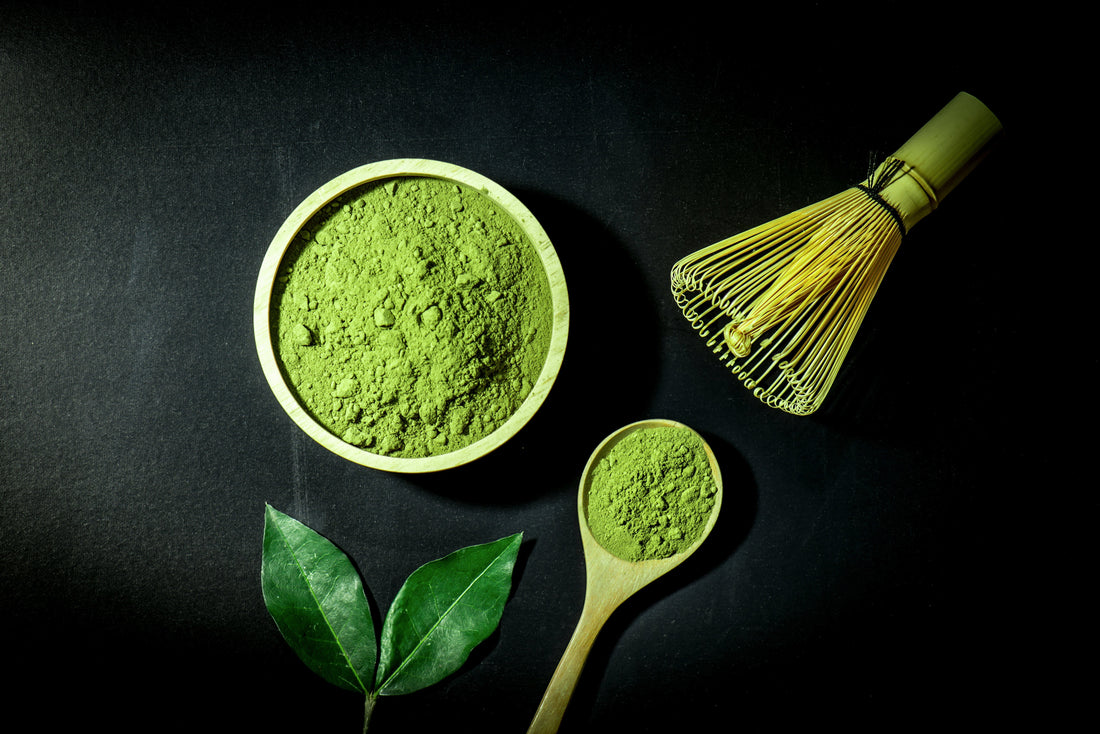
How to Identify the Quality of Matcha: A Simple Guide
Matcha is a finely ground green tea powder celebrated for its vibrant colour, rich flavour, and health benefits. However, not all matcha meets the same standard. The difference between a creamy, umami-rich cup and one that tastes bitter or flat comes down to quality.
In this guide, we’ll break down the essential factors colour, taste, cultivation, grinding, and varietal to help you choose matcha that delivers an authentic and satisfying experience.
1. Colour: Vibrant Green is Key
The colour of matcha is one of the easiest ways to judge its quality.
- High-quality matcha: Bright, jade-green powder that almost glows. This comes from shading the tea plants before harvest, which increases chlorophyll.
- Low-quality matcha: Dull, yellowish, or brownish-green tones often a sign of older leaves, improper storage, or rushed processing.
👉 When shopping, always look for matcha with a rich, vibrant green colour.
2. Taste: Smooth and Umami-Rich
Taste is where matcha truly stands out.
- Premium matcha: Smooth, creamy, slightly sweet, and rich in umami. It should feel velvety on the tongue without harsh aftertaste.
- Lower grades: Bitter, astringent, or overly earthy flavours.
Different grades of matcha also matter:
- Early Spring Harvest (often referred to as for Ceremonial Use): The highest quality, ideal for drinking straight.
- Culinary grade: Stronger and slightly bitter best suited for lattes, smoothies, or baking.
3. Organic vs Non-Organic Matcha
- Organic matcha: Grown without pesticides or synthetic fertilizers. Many people prefer it for its purity and sustainability
- Non-organic matcha: Can still be excellent in flavour and colour, but quality depends heavily on farming practices and transparency from growers.
💡 Tip: Whenever possible, choose organic or at least brands that clearly disclose their agricultural standards.
4. Grinding Method: Stone-Milled or Machine-Milled
The grinding process plays a big role in matcha’s smoothness and mouthfeel. The jury is. still out on how it impacts quality as the experience of the processing masters play a big role.
- Stone-milled matcha: Traditionally ground slowly with granite mills. This method preserves nutrients, avoids heat damage, and produces an ultra-fine, silky powder that whisks easily. This is capacity and staff constraint in modern Japan
- Machine-milled matcha: Faster and cheaper, but can overheat leaves if processors not skilled. Less capacity constraint than stone milling.
5. Varietal (Cultivar): Subtle but Important
Just like wine grapes, different tea plant cultivars influence matcha’s flavour:
- Samidori: Known for rich sweetness and umami.
- Okumidori: Offers a smooth balance of flavour and aroma.
- Yabukita: One of the most common cultivars, producing fresh, grassy notes.
Premium matcha blends often combine multiple cultivars to create a more balanced flavour profile.
Final Sip: How to Choose the Best Matcha
To experience matcha at its best, look for:
✅ Bright, vivid green colour
✅ Smooth, naturally sweet taste with umami
✅ Organic, sustainable sourcing
✅ Reputable cultivars or blend information
High-quality matcha is worth the investment not just for its flavour, but also for the craftsmanship and tradition behind every cup.
👉 Ready to taste the difference? Browse our curated range of premium matcha at Tea Rebellion’s Matcha Collection.
Conclusion
Choosing high-quality matcha comes down to a few key factors: colour, taste, aroma, sourcing, and how it’s processed. Paying attention to these details will help you find matcha that delivers the smooth flavour, vibrant green colour, and health benefits this tea is known for. With practice, you’ll quickly learn to distinguish premium grade matcha from lower-quality options and enjoy a more authentic experience in every cup.
